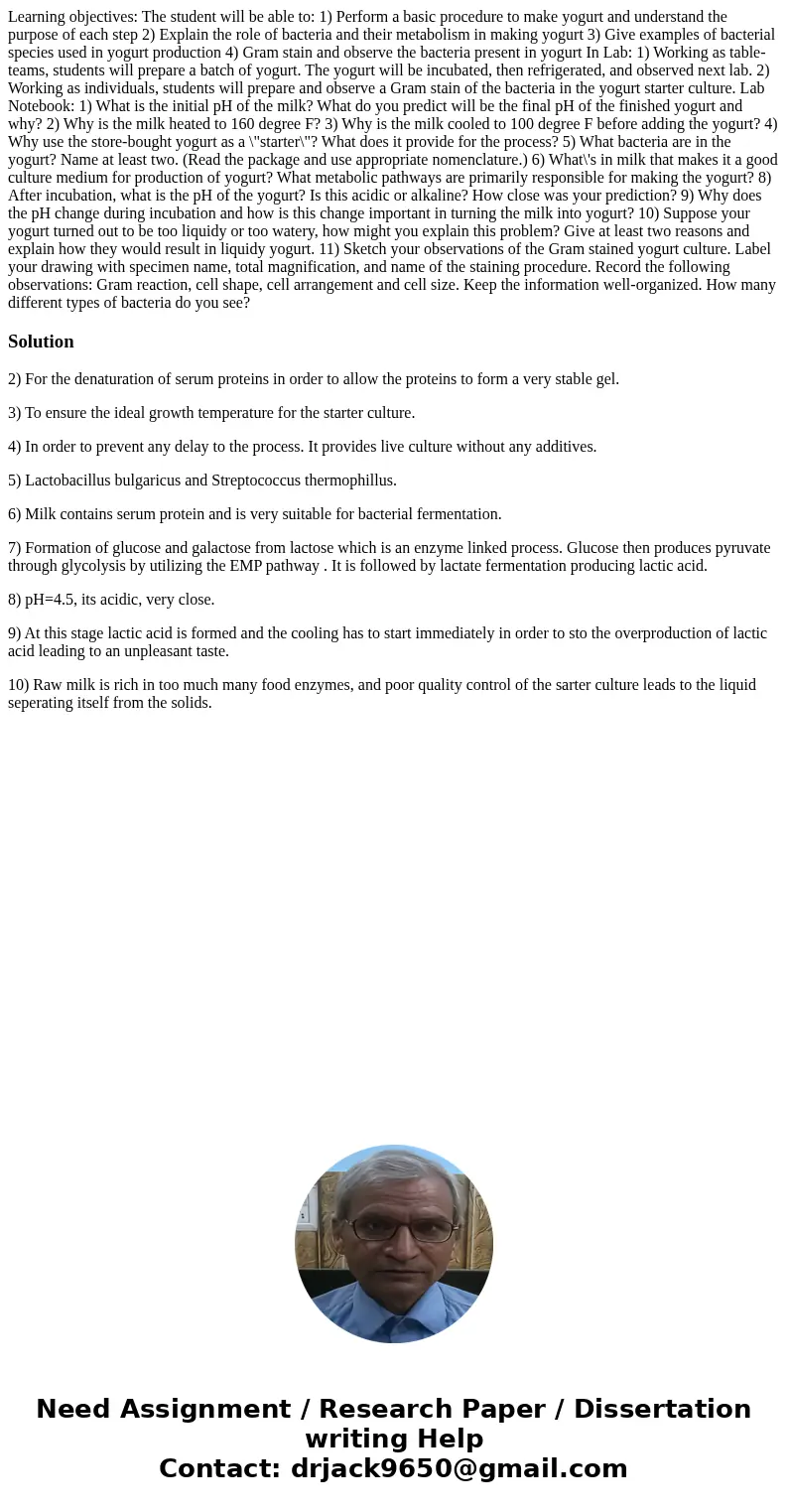Learning objectives: The student will be able to: 1) Perform a basic procedure to make yogurt and understand the purpose of each step 2) Explain the role of bacteria and their metabolism in making yogurt 3) Give examples of bacterial species used in yogurt production 4) Gram stain and observe the bacteria present in yogurt In Lab: 1) Working as table-teams, students will prepare a batch of yogurt. The yogurt will be incubated, then refrigerated, and observed next lab. 2) Working as individuals, students will prepare and observe a Gram stain of the bacteria in the yogurt starter culture. Lab Notebook: 1) What is the initial pH of the milk? What do you predict will be the final pH of the finished yogurt and why? 2) Why is the milk heated to 160 degree F? 3) Why is the milk cooled to 100 degree F before adding the yogurt? 4) Why use the store-bought yogurt as a \"starter\"? What does it provide for the process? 5) What bacteria are in the yogurt? Name at least two. (Read the package and use appropriate nomenclature.) 6) What\'s in milk that makes it a good culture medium for production of yogurt? What metabolic pathways are primarily responsible for making the yogurt? 8) After incubation, what is the pH of the yogurt? Is this acidic or alkaline? How close was your prediction? 9) Why does the pH change during incubation and how is this change important in turning the milk into yogurt? 10) Suppose your yogurt turned out to be too liquidy or too watery, how might you explain this problem? Give at least two reasons and explain how they would result in liquidy yogurt. 11) Sketch your observations of the Gram stained yogurt culture. Label your drawing with specimen name, total magnification, and name of the staining procedure. Record the following observations: Gram reaction, cell shape, cell arrangement and cell size. Keep the information well-organized. How many different types of bacteria do you see?
2) For the denaturation of serum proteins in order to allow the proteins to form a very stable gel.
3) To ensure the ideal growth temperature for the starter culture.
4) In order to prevent any delay to the process. It provides live culture without any additives.
5) Lactobacillus bulgaricus and Streptococcus thermophillus.
6) Milk contains serum protein and is very suitable for bacterial fermentation.
7) Formation of glucose and galactose from lactose which is an enzyme linked process. Glucose then produces pyruvate through glycolysis by utilizing the EMP pathway . It is followed by lactate fermentation producing lactic acid.
8) pH=4.5, its acidic, very close.
9) At this stage lactic acid is formed and the cooling has to start immediately in order to sto the overproduction of lactic acid leading to an unpleasant taste.
10) Raw milk is rich in too much many food enzymes, and poor quality control of the sarter culture leads to the liquid seperating itself from the solids.

 Homework Sourse
Homework Sourse